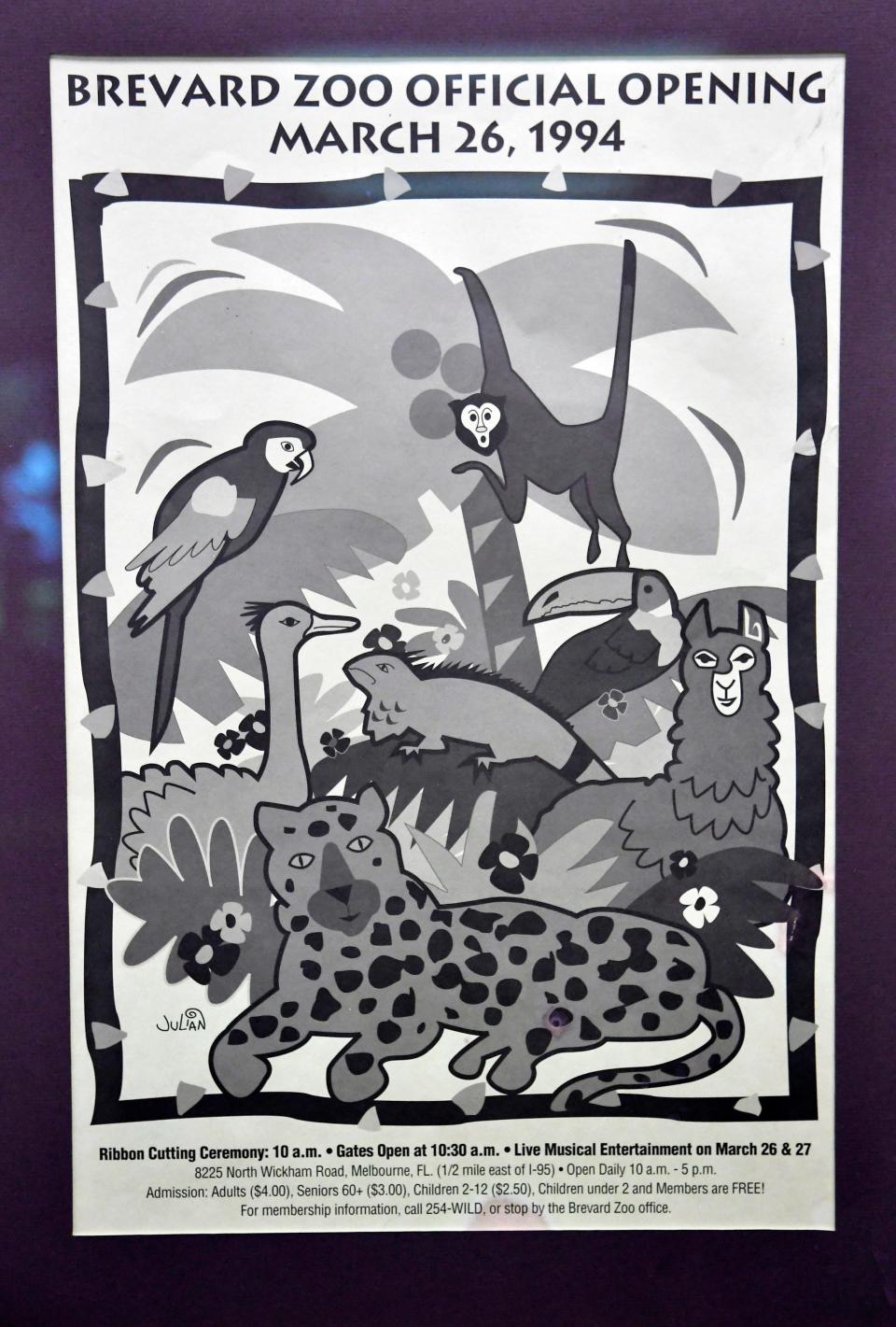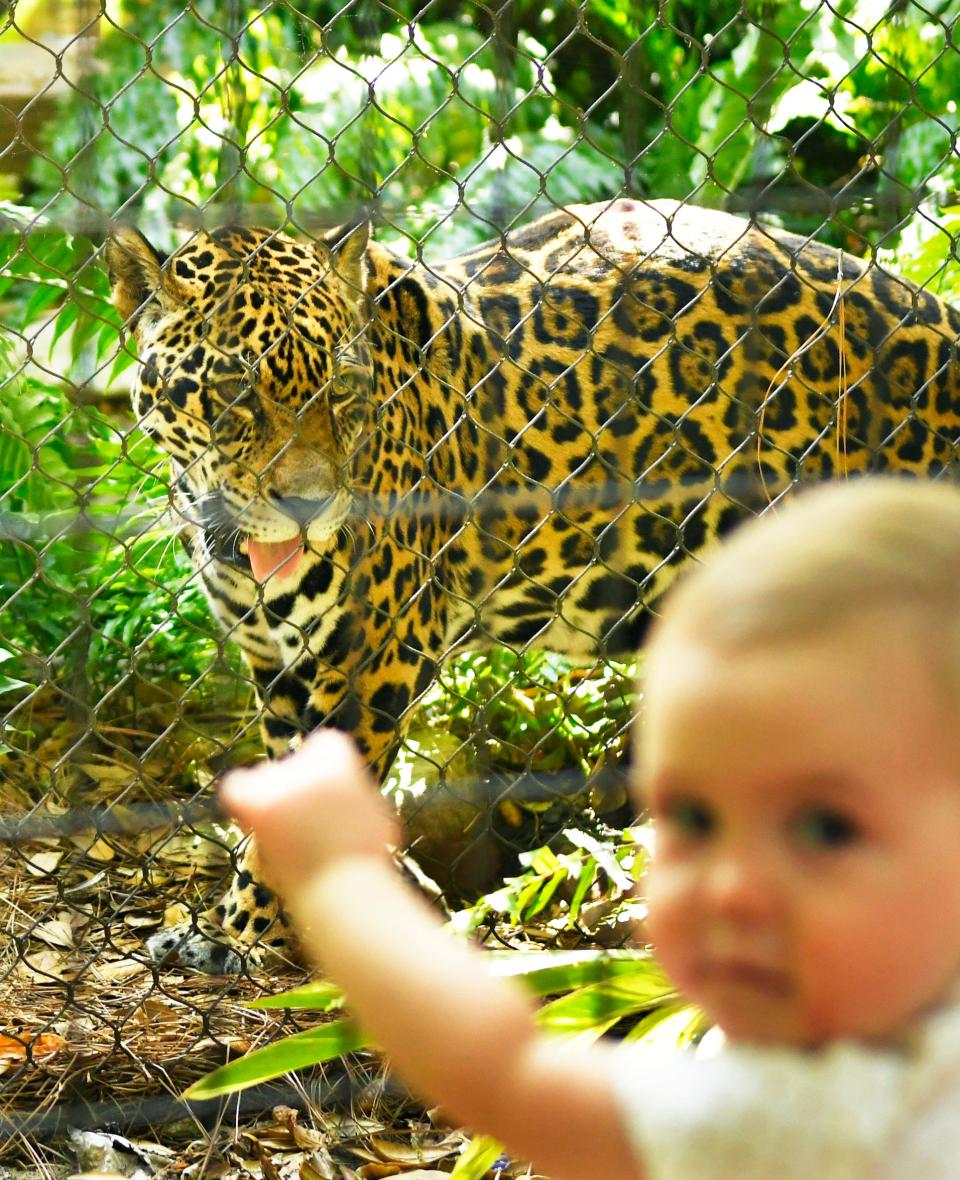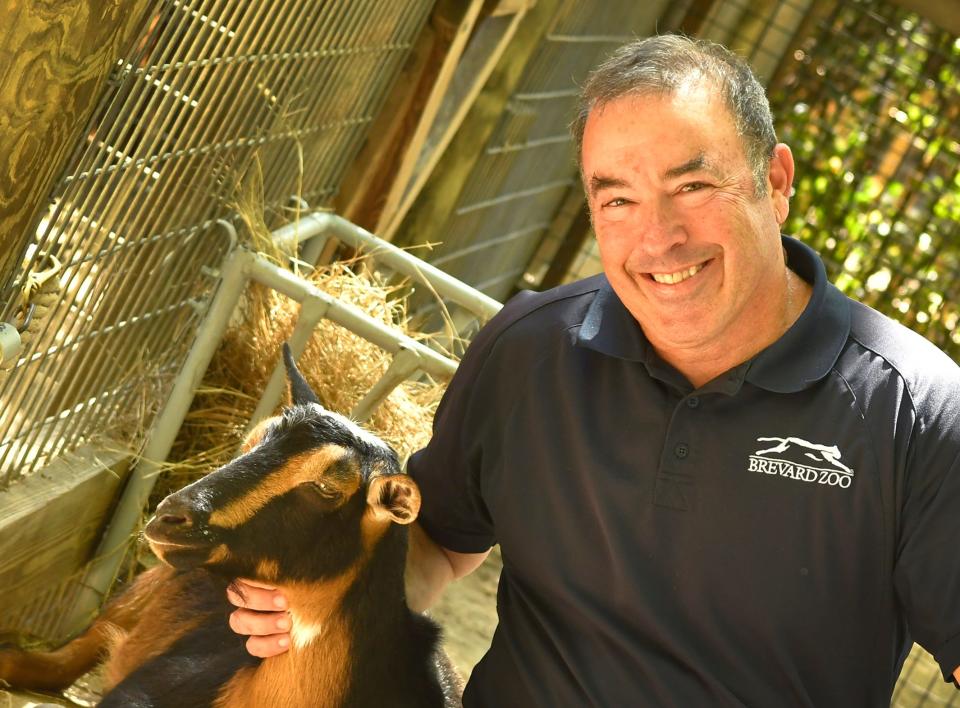'Community built' Brevard Zoo turns 30. Here's how it happened and what's next
Three decades ago, Brevardians built a zoo of their own, in a volunteer effort similar to an Amish barn raising.
It was the largest community zoo build in history.
And it all started three decades earlier as a makeshift wooden rabbit hutch that citrus farmer Floyd Houser built for his grandkids at his West Melbourne fruit stand. Kids loved it, so did parents.
Diehards keep dream of a Brevard Zoo alive
More: USA Today 10Best names top zoos in the country: Did Brevard Zoo make the list?
Houser could never have foreseen how far his humble hutch of rabbits would leap.
Houser's happenstance 1965 rabbit hutch off U.S. 192 would ultimately add big cats, even an elephant, to the delight of his and countless other grandchildren. Two years after his death in 1987, his road-side zoo would fold.
Houser's family would eventually sell the land and about 150 animals were shipped to other zoos around the country.
But David Mannes, who'd worked there since age 19, would keep the dream of a local zoo alive.
"I never thought it would get so big, so fast," said Mannes, one of Brevard Zoo's pioneers. "I got to build my dream zoo."
Trying to make it happen

More: Double feature: Brevard Zoo returns two rehabilitated turtles into ocean
As Houser's struggled in the mid-1980s, Mannes had heard rumors about local veterinarians who wanted to form a zoological society. He called them.
By late 1984, grassroots organizers — spearheaded by Mannes — incorporated the East Coast Zoological Society of Florida. They took possession of Houser's animals in 1985 and leased his outdated facility for $1 per year after he fell ill.
After Houser's death and the sale of his land, there was thought of a zoo in Palm Bay, Titusville, maybe Wickham Park, or on Barnes Boulevard in Rockledge. Often, there were naysayer neighbors and/or threatened scrub jays in the way.
Mannes and his friends, such as Marilyn Collins, who would become Brevard Zoo's marketing director, wouldn't give up. They adopted some of the animals.
Mannes knocked on developer Jim Swann's door. "I went to his house and asked him if he'd help me build a zoo, and he said 'No,' " Mannes told FLORIDA TODAY in 2003.
But the notion piqued Swann's penchant for creating. He prodded influential friends.
"I'm a creator. That's what I do for a living," Swann said. "It's fun."
'All volunteer mode'

In February 1990, Swann wrote a letter of his vision for the zoo, sending it to the zoo's board and supporters. "I know it is bad luck, but I can’t help but anticipate that we are actually going to get to build the zoo," Swann wrote in the letter. "My head is spinning with ideas and concepts."
He added: "I would like to build a new zoo in an almost all volunteer mode."
There was buy-in, but it wasn't a shoe-in.
The idea of a community-built zoo excited a lot of people, but it wasn't clear at first if it was possible. "I think it was a big question," Jim Swann said of the prospects that the zoo would, "and that was the fun of it."
In 1990, the Brevard County Tourism Development Council committed $2.5 million for zoo construction over 10 years via taxes on motel and hotel rooms. The Legislature earmarked $500,000, so long as the community raised $500,000 in matching funds. A Founders Society, boasting more than 300 members, also contributed the matching funds.
Frank Vega, publisher of FLORIDA TODAY at the time, also rallied community leaders. Vega, 76, recalls a meeting with two caretakers from Houser's zoo, seeking a Gannett Foundation grant to move the animals. "They looked like Jungle Jim and Jungle Jane," Vega said of their caretaker attire: scarfs, hats, socks pulled up to knees, etc.
Duda's donated land makes idea of Brevard Zoo 'real'

Vega credits Cocoa Beach attorney Malcolm Kirschenbaum's role in nudging the Duda family to donate the land for the zoo in 1990. "That's what kind of made it real," Vega said. "Behind the scenes, he was critically important."
In 1990, A. Duda and Sons donated land along Wickham Road, where the zoo lies on 72 acres, including about 20 acres of wetlands.
The community build began in March 1992, as volunteers started to build the "Paws On" petting-zoo area and the Latin American animal loop.
Other facilities offered help and resources. The zoo's railroad track originally came from Disney World's Fort Wilderness exhibit, having been sitting there for four years.
During one bustling six-week stretch, 17,452 volunteers donated 84,808 manhours during three work shifts, adding up to $678,464 in free labor. Volunteers sunk 800 poles into the ground and built boardwalks, gazebos, animal enclosures, four bridges and other attractions, using 350,000 screws and 374,000 nails. There were public pleas for power tools, hammers, shovels, gloves, babysitters and food servers — hungry volunteers devoured more than 20,200 meals.
But construction on the almost-finished zoo soon stalled because of financing problems.
By the September 1992 target opening date, the zoo only had five miniature horses and a handful of goats.
A February 1993 FLORIDA TODAY headline declared: "Zoo trapped in financing jungle."
But by July of that year, zoo officials secured a $901,000 NationsBank loan to resume construction. Volunteer work days resumed, and the facility was finished.
After the ribbon was cut on March 26, 1994, about 3,000 visitors explored Paws On and the Latin American animal exhibits. They marveled at howler monkeys, scarlet macaws, prehensile-tailed porcupines and standouts such as Onyx the black jaguar, Hoover the giant anteater and Butterball the screech owl.
Of Houser's menagerie only "Abigail," an Arabian donkey, made it to the new zoo. She took up residence in the Paws On petting area, alongside alpacas and a miniature horse.
The fledgling zoo's payroll included about 20 full- and part-time employees. Now there are 179 full-time staff, bolstered by 46 part-time workers and 500 volunteers.
Wild Florida and the zoo train opened in 1995, and subsequent years added kayaking and Australian and Asian animals.
In a 2003 milestone, more than 800 volunteers helped build the $2.5 million Expedition Africa loop, featuring giraffes, primates and rhinos.
That was mostly Margo McKnight's vision, which she sketched on paper. Her background was habitat design. She'd learned much of it during her Busch Gardens days, with Chris DeLorey, a former education specialist at Busch Gardens Tampa, who helped launch Brevard Zoo as a consultant in the early 1990s. He'd helped get McKnight here, telling her, in a way, how it was 'all happening' at Brevard Zoo.
As the zoo's director from 1998 to 2004, McKnight created an internationally-recognized conservation program, made the zoo the first to create a “kayak through animal habitats” experience, and designed themed classrooms for Title I schools. She's now the president and CEO of the Palm Beach Zoo.
McKnight is a painter and the Brevard Zoo was an empty canvas, a great frame open to new ideas, many of them her own.
Like Winsten, McKnight's voice exudes an infectious passion for conservation. It's a passion that's always been there among the zoo's pioneers and advocates.
"To me, the most important thing that those years did for that zoo and other zoos … was when we brought on a very strong conservation program," McKnight said.
"They have maintained a focus on the mission, which is really wonderful," she added. "They're paying their own way, that's the magic of it.
"I love that zoo."
McKnight kept championing the notion of how "charismatic megafauna" such as big cats would create those connections that would keep future generations supporting the zoo and conservation.
Features such as a splash park were another way for kids to connect with nature.
"We knew kids needed to get outdoors," Jim Swann said. "They needed to have exposure to the natural world. That's what the zoo has done so well," he added. "If we don't give them a chance to experience the natural world, then they won't be experiencing the natural world."
There've been high points in the zoo's tenure on Wickham Road: successful breeding of black howler monkeys and red foxes. A low point came in the winter of 2000, when Onyx, an 11-year-old jaguar — the zoo's symbol — died while under anesthesia for a routine physical. Veterinarians said high levels of enzymes triggered by stress caused the death.
Highlights in recent years include a bear habitat in 2019; a temporary lion habitat in 2022; and a preschool in 2023.
Next on the agenda: a $100 million aquarium and nature conservation campus at Port Canaveral, which will feature a manatee rehabilitation center to treat sickly and struggling sea cows, expected to open in 2027.
For Cheri Purnell, director of membership and first impressions, who's been involved with the zoo since Day 1, her career highlight was "seeing everybody coming together and really wanting to see the zoo succeed.
The highlights happen every day, though.
"We bring people joy," she said. "We've come a long way."
About Brevard Zoo
Earned 90% of funds through admission-related income.
More than 400,000 people visit the Zoo annually (with 44% from outside the county)
Annual economic impact exceeds $59.5 million.
Has continually been recognized as a leading institution in top zoo lists and awards from the Association of Zoos and Aquariums.
Source: Brevard Zoo
This article originally appeared on Florida Today: Brevard Zoo turns 30: How the largest community zoo got built

